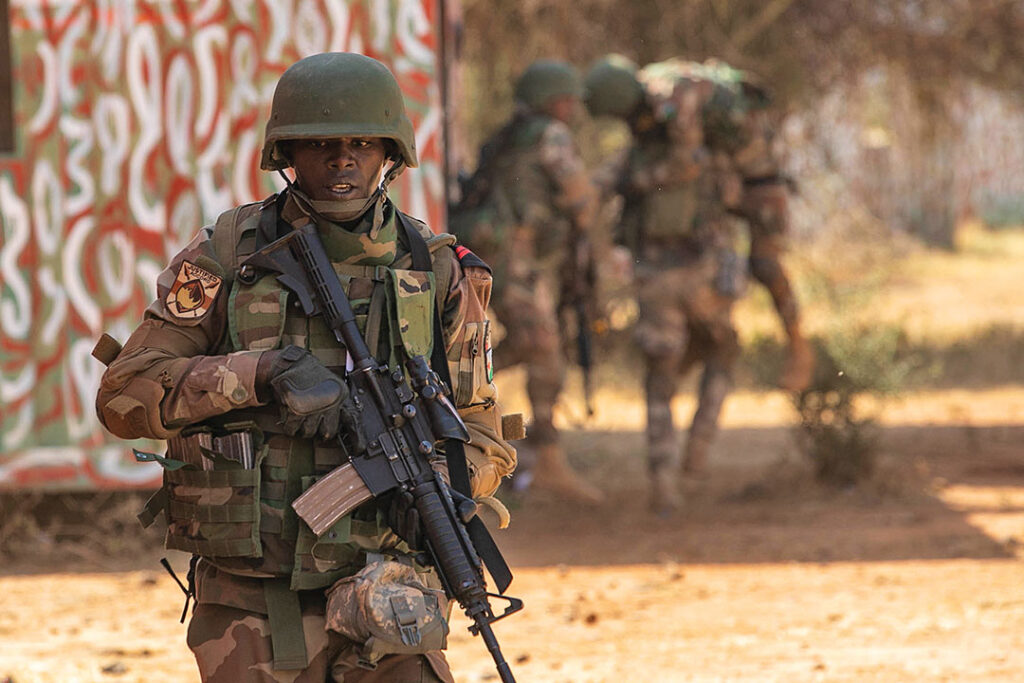U.S. Africa Command Staff
Although most of Africa remains safe, pockets of extremist violence have festered and are spreading. Global terrorist organizations seek to exploit these security weak spots after losing ground in other parts of the world.
These groups see parts of the Sahel, the Horn of Africa and northern Mozambique as places where they are free to recruit, expand and launch attacks.
A 2023 United Nations report called Sub-Saharan Africa the world’s “epicenter” for terrorism. Nearly half of all global terrorism-related deaths in 2021 occurred in Sub-Saharan Africa. The most affected were Burkina Faso, Mali, Niger and Somalia, with 34% of the world’s terrorism-related deaths.
This violence not only destroys lives, but it also slows economic progress and reverses democratic gains.
A military response still is the most common answer to the problem. Countries are looking at new ways to quickly assemble coalitions of determined nations to respond to threats either under the banner of the African Union, a regional economic community or through an ad hoc arrangement.
But hard-earned lessons show that military force alone cannot defeat an insurgency. If the underlying factors driving insecurity are not addressed, violence will return.
Countries must learn from each other about the best ways to build long-term strategies against extremism. This includes countering extremist ideology, demobilizing and reintegrating former fighters, and building trust within communities affected by violence.
Above all, countries must look at the factors leading young people toward extremist recruitment. It is no surprise that the areas most easily exploited by insurgent groups are underdeveloped and far from national capitals.
Countries that have had the most success at countering extremism and other types of insurgencies have taken a whole-of-government approach. In these cases, the security sector provides safety and stability in an area so that development and outreach can occur.
As military professionals, we know the complexity of counterinsurgency operations. We know it takes time, requires the buy-in of multiple stakeholders and demands a willingness to try unconventional strategies. By learning from one another and partnering, we can help strengthen the weak spots and prevent insurgent groups from expanding their reach on the continent.

